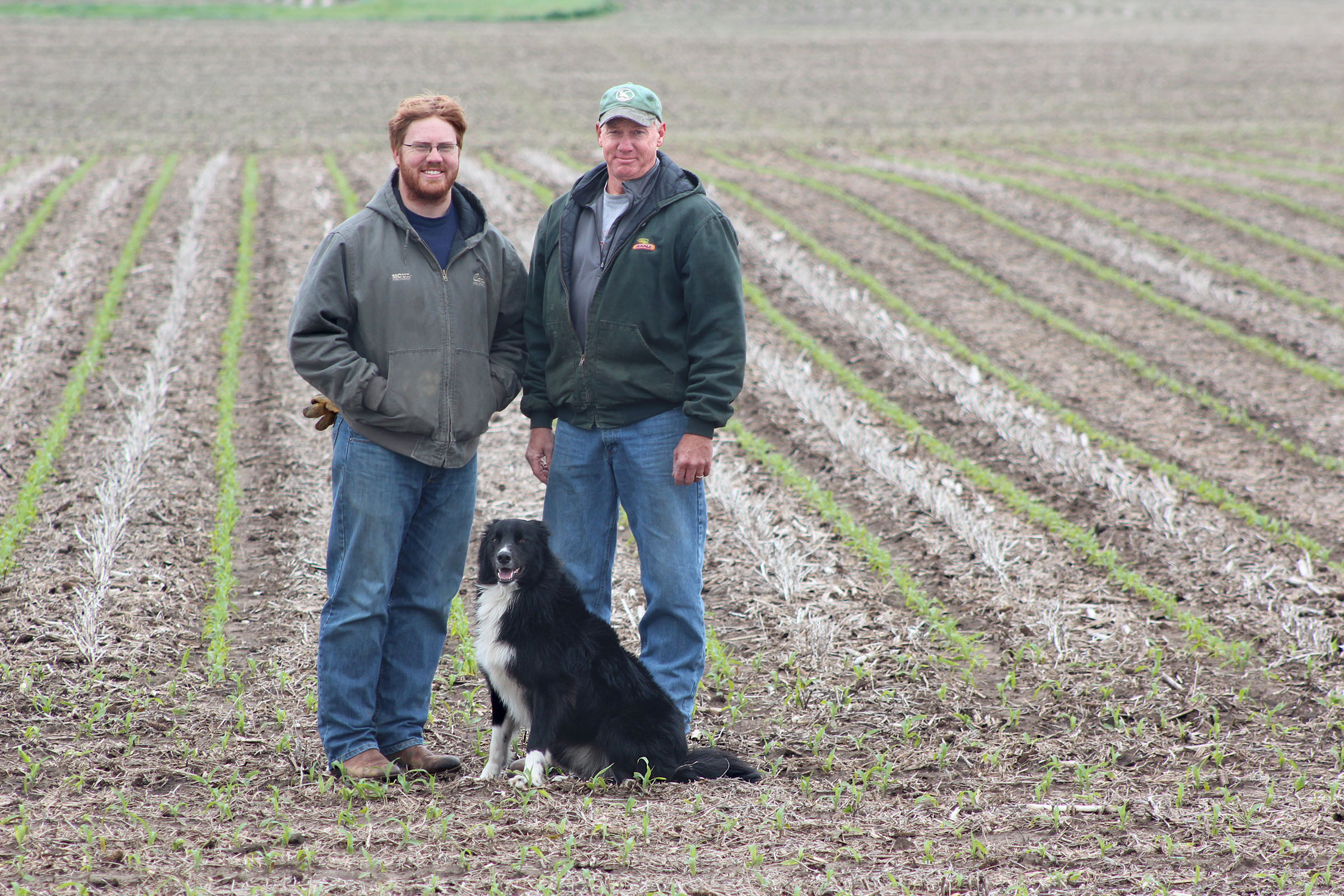
Geff Fitzer, who farms west of Luverne, has been strip-tilling his fields for 13 years with notable success.
That can be no better proven than in the June 2014 and recent May 10 rain events, both of which gouged deep gullies through fields and washed fertile topsoil into ditches and downstream.
“I have to admit, my fields came through in great shape,” he said about the storms.
“I’ve had virtually no loss of soil or water. … I’ve had soil wash across my fields, but it’s not my soil; it’s my neighbor’s.”
The way strip-till works in a standard row, only a small strip of dirt is tilled where the seed is planted and fertilizer is applied.
The rest of the row is left untilled, with stubble from last year’s crop remaining in place.
“I’m disturbing only 20 percent of the field, leaving the other 80 percent undisturbed,” Fitzer said.
In addition to preventing soil erosion and moisture preservation, this method is good for soil health.
“When you leave those roots in the ground, it leaves a mass of residue underground that helps bond the soil,” he said.
“The reduction of tillage is very important for night crawlers, which do their own part for creating macro pores that allow water to soak into the soil instead of running off.”
He explained that when surface soil is tilled into a fine powder, it takes only an inch or two of rain to create runoff.
“The rain basically pulverizes the exposed soil particles that are not protected by residue, and the soil particles are so fine, they actually form a seal on the surface.”
Conversely, soil with residue and reduced tillage retains moisture. “It opens up and acts like a sponge,” Fitzer said.
Strip-till allows the soil’s nutrients to be better adapted to the plant’s needs, while still giving residue cover to the soil between the rows.
While he can’t confirm that his yields have improved, Fitzer said his input costs are less, since he’s making fewer trips across the field for tilling and less fertilizer is required.
When fertilizer is applied, it can be directly applied in these strips where the seed is being planted, reducing the amount of fertilizer needed while improving proximity of the fertilizer to the roots.
Fitzer admits making the switch to strip-till and investing in the equipment was a big move, but he said the decision has more than paid off.
“I would have a hard time doing it any other way,” he said.
“When I drive around and see all the erosion … It’s so simple to stop this, if we’d all be willing to make that change.”
Fitzer doesn’t actively promote strip-tilling, but he said two of his neighbors are now strip-tilling their ground after seeing the benefits of the practice.
Also, he does some custom strip-till work, hoping those producers will also see the advantage and use more conservation methods.


